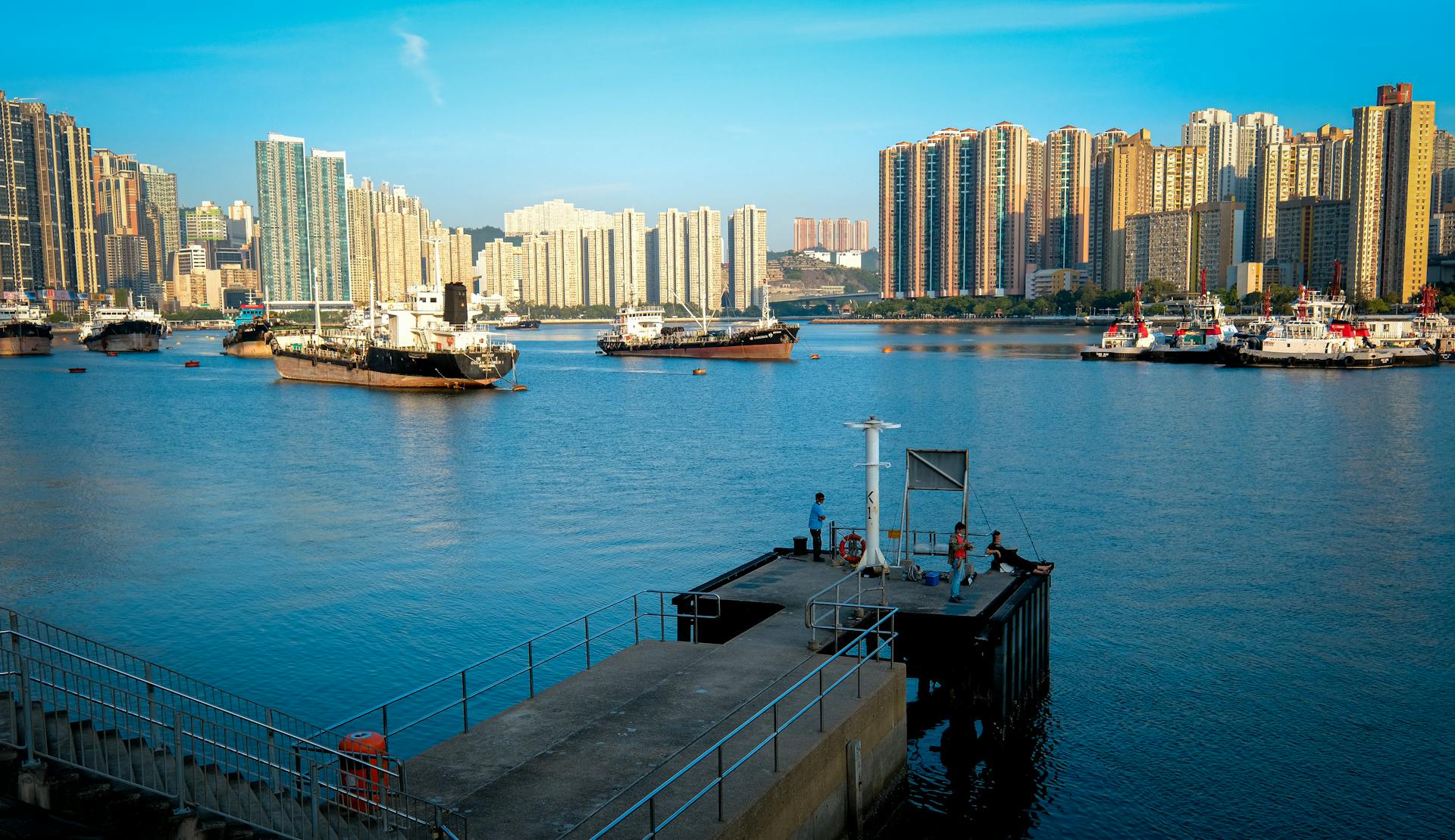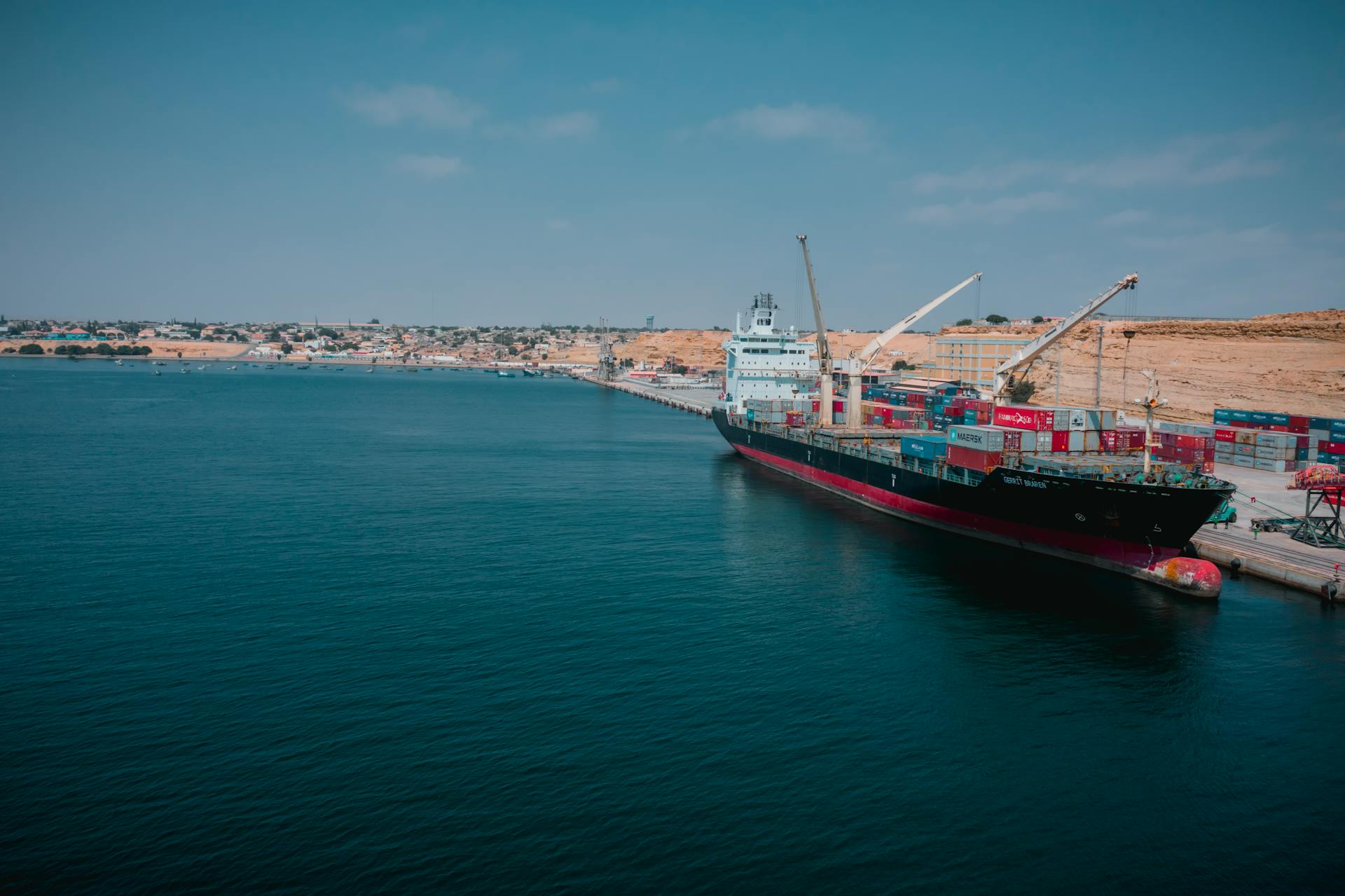
As we explore historical ports across continents, it's fascinating to see how they've played a crucial role in shaping global trade and commerce. The ancient port of Ostia Antica in Italy, for example, was a major hub for the Roman Empire's maritime trade.
The strategic location of Ostia Antica allowed it to control the flow of goods and resources between Rome and the Mediterranean. This is evident in its well-preserved ruins, which showcase the impressive architecture and engineering feats of the ancient Romans.
From ancient Italy to modern-day China, historical ports have been a driving force behind economic growth and cultural exchange. The port of Quanzhou in China, for instance, was a major center for the Silk Road trade during the Song Dynasty.
Historical Ports Around the World
Historical ports have played a significant role in shaping the world's trade, commerce, and cultures. From ancient times to the present day, these ports have connected civilizations and facilitated the exchange of goods, ideas, and people.
The Port of Babylon, located in present-day Iraq, is one of the oldest known ports in the world, dating back to the 7th century BC. The Port of Babylon was a major hub for trade between the ancient civilizations of Mesopotamia and the Mediterranean region.
In ancient China, the Port of Quanzhou was a significant trading center during the Song Dynasty (960-1279 AD). The port's strategic location on the Fujian coast made it an important stopover for merchants traveling between China and Southeast Asia.
India
India has a rich maritime history dating back to the 4th century BCE, with the Port of Chittagong being a recorded seaport since then.
The Port of Chittagong was considered one of the finest in the Eastern world, as noted on Ptolemy's map drawn in the 2nd century.
Lothal, a city in the Bhāl region of Gujarat, India, is believed to be the world's earliest known dock, constructed around 2200 BCE.
Lothal was an important trade center around 2400 BC, facilitating maritime trade with Mesopotamia, Egypt, and Persia.
It is said to be the oldest port known in history, with its unique dockyard and well-planned layout showcasing a sophisticated understanding of urban planning and maritime logistics.
Carthage: The Maritime Powerhouse
Carthage was a dominant maritime power in the ancient world, founded by the Phoenicians in the 9th century BC.
Its impressive harbor, the Cothon, included both a merchant and military port, showcasing the city's strategic importance.
Carthage was renowned for its affluence, becoming one of the most affluent cities of the ancient world.
The city's legacy as a center of trade and naval innovation endures, despite its eventual destruction by Rome in the Third Punic War (146 BC).
Ports, Regions
Historical ports have played a significant role in shaping the regions they're located in. Many of these ports have been instrumental in the development of trade, commerce, and cultural exchange.
The Port of Venice, for example, was a major hub for the spice trade in the 13th century. Its strategic location made it a crucial stop for merchants traveling between Europe and Asia.
The port city of Bruges in Belgium was a significant center for the wool trade in the 14th century. Its canals and warehouses were perfectly suited for the storage and transportation of wool.
The Port of Rotterdam in the Netherlands has a long history dating back to the 14th century. It has been a major hub for trade and commerce in Europe for centuries.
The city of Alexandria in Egypt was a major port city in the ancient world. It was an important center for the trade of grains, wine, and other goods.
The Port of Bristol in England was a major hub for the transatlantic slave trade in the 18th century. Its location made it a convenient stop for slave ships traveling between Africa and the Americas.
The port city of Guangzhou in China was a major center for the tea trade in the 19th century. Its location made it a crucial stop for merchants traveling between Europe and Asia.
Notable Ports
Historical ports have played a significant role in shaping global trade and commerce.
The Port of Rotterdam, one of the busiest ports in the world, has been a major hub for trade in Europe since the 14th century.
Its strategic location on the Rhine River has made it an ideal spot for merchants to transport goods.
Egypt
Egypt was a major hub for ancient trade, with Canopus serving as the principal port for Greek trade before the foundation of Alexandria.
The port of Canopus played a crucial role in facilitating trade between Greece and Egypt, making it a significant stop for merchants and sailors.
Located in Egypt, Canopus was the primary port for Greek trade before the city of Alexandria was established, showcasing the importance of this ancient port.
Piraeus: Gateway of Greece
Piraeus, the port city of Athens, was one of the most important maritime and military hubs of ancient Greece.
Founded in the early 5th century BC, Piraeus was meticulously planned by the architect Hippodamus of Miletus, making it one of the earliest examples of urban planning.
Piraeus was not only crucial for Athens' sea trade but also served as the home base for its powerful navy.
The Long Walls connecting Athens to Piraeus underscored the city's importance, ensuring a continuous supply line during sieges.
These Long Walls were a testament to the strategic importance of Piraeus, allowing Athens to maintain its connection to the sea even in times of war.
Piraeus played a crucial role in the Battle of Salamis against the Achaemenid Empire in 480 BC, showcasing the city's significance in ancient Greek history.
East Africa
East Africa was a hub of trade activity, with Post-classical Swahili kingdoms establishing trade port islands and routes with the Islamic world and Asia.
These trade ports were described by Greek historians as "metropolises", a testament to their significance. Famous East African trade ports include Mombasa, Zanzibar, Mogadishu, Adulis, and Kilwa.
Chinese sailors like Zheng He and medieval Islamic historians like Abu Abdullah ibn Battuta visited these ports, providing a glimpse into the rich history of East African trade.
Japan
Japan was a unique case in terms of trade during the Edo period. The island of Dejima was the only port open for trade with Europe, receiving only Portuguese and Dutch traders due to their historical relations.
This limited access to European trade was a deliberate policy to control the flow of goods and ideas into the country. Osaka, on the other hand, was the largest domestic port and the main trade hub for rice.
Osaka's importance as a trade hub was a testament to the country's reliance on rice as a staple food. The port's role in facilitating the trade of rice had a significant impact on the country's economy and food supply.
A Few
A Few notable ports are worth mentioning.
The Port of Rotterdam in the Netherlands is the largest port in Europe, handling over 460 million tons of cargo annually.
It's impressive to think about the sheer scale of operations at this port, which is a significant contributor to the country's economy.
The Port of Singapore is another notable example, with a total cargo throughput of over 630 million tons per year.
This port's efficiency and strategic location make it a key player in global trade.
Port History and Development
Historical ports have a rich and fascinating history. The oldest known port is the Port of Babylon, established around 2500 BC in present-day Iraq. This ancient port was a major hub for trade and commerce in the region.
The Port of Babylon was a key location for the exchange of goods such as grains, textiles, and metals. The port's strategic location allowed it to thrive for centuries, with many civilizations, including the Babylonians, Assyrians, and Persians, vying for control of the area.
The development of ports like the Port of Babylon was often driven by the need for trade and commerce.
China
China has a rich port history dating back to the Qin dynasty. Guangzhou was an important port during ancient times as far back as the Qin dynasty.
Port development in China has a long history, with Guangzhou being a key hub.
Medieval Italy
Medieval Italy was a time of great maritime activity, with cities like Amalfi, Genoa, Pisa, and Venice becoming major powers in the Mediterranean.

These cities, known as maritime republics, had a significant impact on the history of navigation and commerce. They built fleets of ships to protect themselves and support extensive trade networks across the Mediterranean.
The maritime republics played a crucial role in reestablishing contacts between Europe, Asia, and Africa, which had been interrupted during the early Middle Ages. They also had a significant role in the Crusades.
Some of the most notable maritime republics in Medieval Italy include Amalfi, Genoa, Pisa, and Venice. These cities experienced fluctuating fortunes over the centuries, with some rising to prominence and others declining.
Here's a brief overview of the rise and fall of some of the most notable maritime republics:
- Amalfi and Gaeta: reached their heyday in the 9th and 10th centuries, but declined rapidly after the 11th century.
- Genoa and Venice: became the most powerful republics after the 11th century.
- Pisa: experienced its most flourishing period in the 13th century, but declined to the point of losing its autonomy after the 14th century.
- Ancona and Ragusa: experienced their golden age in the 15th century, but declined slowly over the next century.
Ostia: Rome's Lifeline
Ostia was a bustling seaport of ancient Rome, situated at the mouth of the River Tiber. Founded in the 4th century BC, it served as Rome's primary naval base.
Ostia was a vital commercial hub that facilitated the flow of goods, slaves, and grains into the heart of the empire. Its diverse architectural remnants, including temples, baths, and warehouses, reflect its cosmopolitan center status.
As Rome expanded, Ostia became a hub of commerce and trade, with its strategic location making it a key player in the empire's economy. Despite its decline in the late Roman Empire, Ostia offers invaluable insights into ancient Roman life and commerce.
Lothal: The Harappan Maritime Marvel
Lothal, one of the southernmost cities of the Indus Valley Civilization, was an important trade center around 2400 BC. It was an island city, but its unique dockyard facilitated maritime trade with Mesopotamia, Egypt, and Persia.
The city's well-planned layout, with its central marketplace, warehouses, and residential areas, reflects a sophisticated understanding of urban planning and maritime logistics. Lothal's dockyard was a marvel of its time, showcasing the advanced knowledge of the Harappans.
It is said to be the oldest port known in history, a testament to the ingenuity and expertise of the people who built it.
From Local to Global
As civilizations grew and expanded, the need for efficient and well-planned ports became crucial. Ostia, situated at the mouth of the River Tiber, served as the bustling seaport of ancient Rome.
Ostia facilitated the flow of goods, slaves, and grains into the heart of the empire, making it a vital commercial hub. Founded in the 4th century BC, it was Rome's primary naval base.
The city's diverse architectural remnants, including temples, baths, and warehouses, reflect its cosmopolitan nature. Lothal, on the other hand, was an important trade center around 2400 BC.
Lothal's unique dockyard facilitated maritime trade with Mesopotamia, Egypt, and Persia. It is said to be the oldest port known in history.
The well-planned layout of Lothal, with its central marketplace, warehouses, and residential areas, reflects a sophisticated understanding of urban planning and maritime logistics.
Frequently Asked Questions
What was the first port in the world?
The oldest known harbor in the world was discovered at Wadi al-Jarf, Egypt, dating back to around 4,600 years ago. It was built by King Cheops to import materials for the construction of the Great Pyramid of Giza.
What are the oldest ports in the US?
Gloucester, Massachusetts, is recognized as America's oldest fishing port, dating back to 1623. This historic seaport has been a major destination for seafood and a thriving community for centuries.
What was the ancient port on the Med coast?
The Cothon was the impressive harbor of Carthage, a dominant maritime power in the ancient Mediterranean. This ancient port was renowned for its merchant and military facilities.
Sources
- https://www.ieg-ego.eu/en/threads/crossroads/courts-and-cities/catia-antunes-early-modern-ports-1500-1750
- https://en.wikipedia.org/wiki/Historical_ports
- https://www.ancientportsantiques.com/a-few-ports/
- https://www.teccontainer.com/blog/the-story-of-6-ancient-ports/
- https://www.ancientportsantiques.com/ancient-port-structures/brief-historical-overview/
Featured Images: pexels.com


